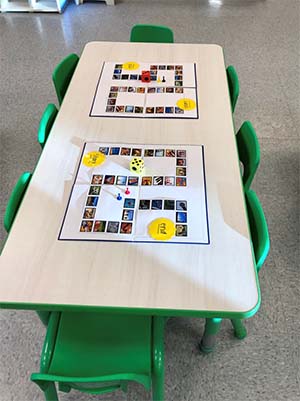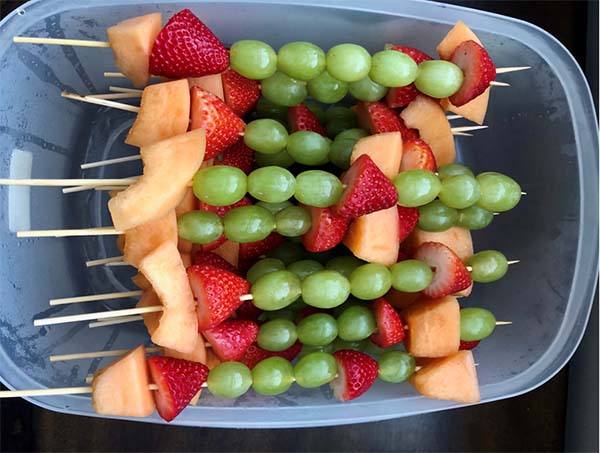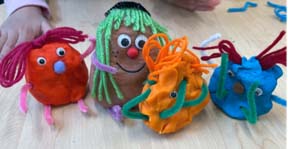Fit5Kids: Reducing Screen Viewing to Prevent Obesity in Hispanic Preschool Children
 Childhood obesity is a major public health problem in the US. Childhood obesity and the lack of physical activity are important risk factors for adult obesity, type 2 diabetes (T2D), cardiovascular disease and multiple cancers. Since childhood PA, obesity and cardiometabolic risk track strongly into adulthood, childhood obesity prevention is necessary to reduce the lifetime risk of obesity and related chronic diseases. Interventions for PA promotion and obesity prevention are urgently needed for populations most affected by this condition. Latino children have among the highest rates of obesity and are the largest and fastest growing minority in the U.S. Therefore, preventing childhood obesity among Latinos should be a public health priority to reduce health impacts from obesity and risk of type 2 diabetes in the U.S. However, a systematic review identified no successful obesity prevention interventions among Latino preschoolers.
Childhood obesity is a major public health problem in the US. Childhood obesity and the lack of physical activity are important risk factors for adult obesity, type 2 diabetes (T2D), cardiovascular disease and multiple cancers. Since childhood PA, obesity and cardiometabolic risk track strongly into adulthood, childhood obesity prevention is necessary to reduce the lifetime risk of obesity and related chronic diseases. Interventions for PA promotion and obesity prevention are urgently needed for populations most affected by this condition. Latino children have among the highest rates of obesity and are the largest and fastest growing minority in the U.S. Therefore, preventing childhood obesity among Latinos should be a public health priority to reduce health impacts from obesity and risk of type 2 diabetes in the U.S. However, a systematic review identified no successful obesity prevention interventions among Latino preschoolers.
This 5-year study evaluates an intervention, called “Fit 5 Kids” (i.e. fit by age 5 years), a preschool curriculum designed to decrease screen time. The program’s goals are to teach participants to decrease their screen watching; encourage alternative activities such as family meals and active playtime; and reduce excess weight gain. This research is a multicenter study conducted in collaboration with Fred Hutchinson Cancer Center and Baylor College of Medicine. The team implemented the intervention both in person and remotely at different Head Start Centers over the past 3 years, with 2022 being the last year of implementation.
The culturally adapted Fit 5 Kids classroom curriculum was taught by trained research staff interventionists at each of the three study sites. Fit 5 Kids was taught over 7 to 8 weeks and consists of 7 weekly themes, which are:
- Increase reading
- Increase the time families eat meals together with the screens turned off
- Alternatives to screen time
- Too much screen time
- Turn off screens week
- Celebrate without screens, throwing a party and fun crafts with study participants
- No more couch potatoes
Each weekly theme is comprised of 5 to 6 lesson plans organized around each theme. The lesson plans include group activities as well as activities for home, which may be physically sent home with students or digitally sent to parents.
Fit 5 Kids also includes a substantial parent component, including:
- A weekly participant family newsletter to keep caretakers informed of the lessons and to provide home activities for caretakers to complete with their preschoolers during the 7 to 8 week curriculum. The participant family newsletter activities were adapted based on our previous work on parent self-efficacy and parent outcome expectations for limiting their preschoolers screen time as well as screen time parenting practices.
- Weekly goal setting with parents around screen time reduction by phone or during child drop-off/pick-up times.
- A lending library of age-appropriate English and Spanish books (including the LeapReader Reading & Writing System), games (e.g., puzzles, Lego Duplo blocks, Magna-Tiles, Playmobile, Bristle Blocks, etc.), arts/crafts, and other projects that children can do alone or with their parents.
- Brief text messages consisting of screen time parenting practices from the Fit 5 Kids parent newsletters and/or associated with lower child screen times. A new text message will be delivered 2-3x/week to the parents’ cell phone (or email) over the 7 to 8 weeks of the curriculum and during the booster weeks (see below).
- Parents were also invited to join an optional private Facebook group only accessible to other study participants and members of the study team. Group members were encouraged to share ideas related to the weekly lessons and goal setting.
Intervention booster weeks: Fit 5 Kids takes 7 to 8 weeks to fully teach. Given that we are interested in producing longer term behavior changes to preschoolers’ screen time, we added two “booster” weeks of the curriculum in late April/early May that were delivered by each site’s staff interventionist. Similar to the main Fit 5 Kids curriculum, the booster weeks have a take-home parent newsletter although on a daily basis (not weekly), goal setting with parents by phone or in person during child pick ups/drop offs, as well as daily text messages consisting of parenting tips on screen time reduction. The two booster weeks mainly focus on the “Alternatives to screen time” and “Turn off the screens” lessons.
 During the COVID-19 pandemic, the intervention had to be modified to be delivered remotely. The Fit 5 Kids lessons were delivered via YouTube videos and the team sent home materials for completing one of the activities of the week. Other intervention components that changed include the lending library and the addition of YouTube Live sessions. Instead of having a lending library, families received a Books and Activities Catalog to choose from. The items the parents choose were then delivered to the families’ home. During the YouTube Live sessions, the interventionalist met with parents to go over the week’s theme, activities and newsletter. It was also an opportunity for parents to ask any questions they might have.
During the COVID-19 pandemic, the intervention had to be modified to be delivered remotely. The Fit 5 Kids lessons were delivered via YouTube videos and the team sent home materials for completing one of the activities of the week. Other intervention components that changed include the lending library and the addition of YouTube Live sessions. Instead of having a lending library, families received a Books and Activities Catalog to choose from. The items the parents choose were then delivered to the families’ home. During the YouTube Live sessions, the interventionalist met with parents to go over the week’s theme, activities and newsletter. It was also an opportunity for parents to ask any questions they might have.
Read more at Clinicaltrials.gov.
